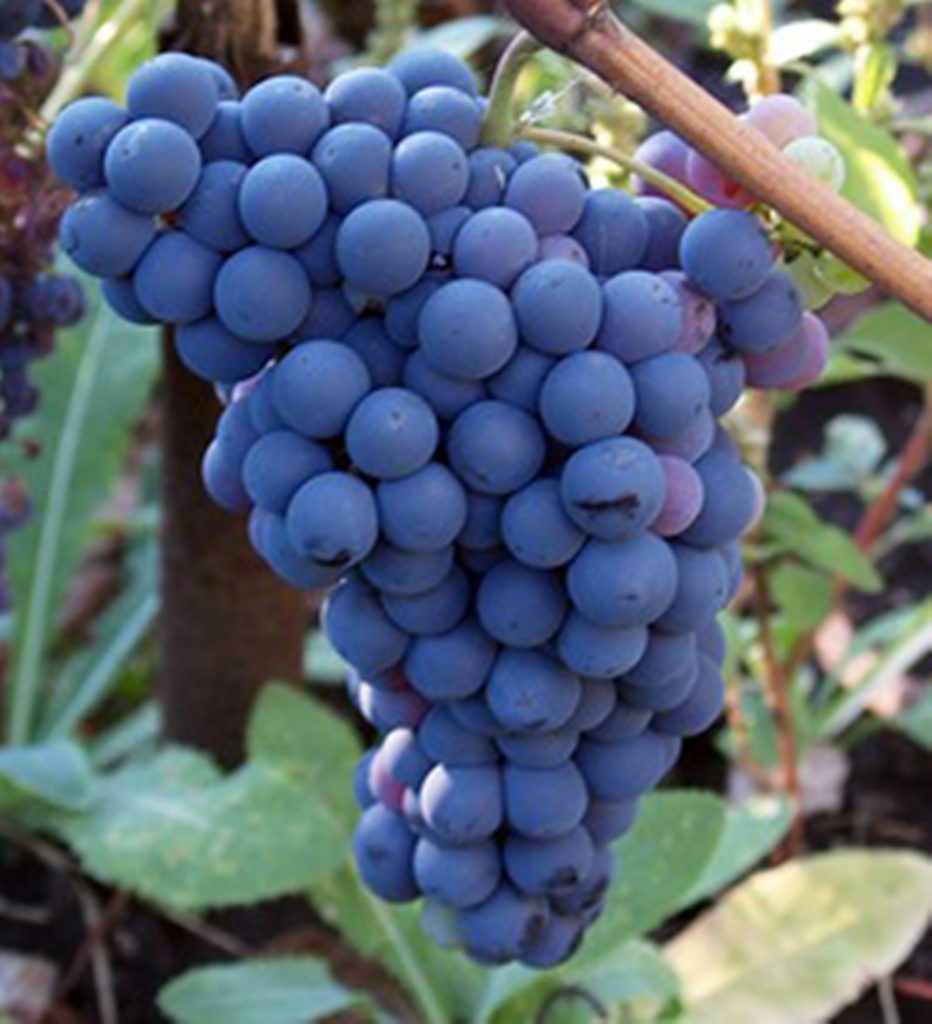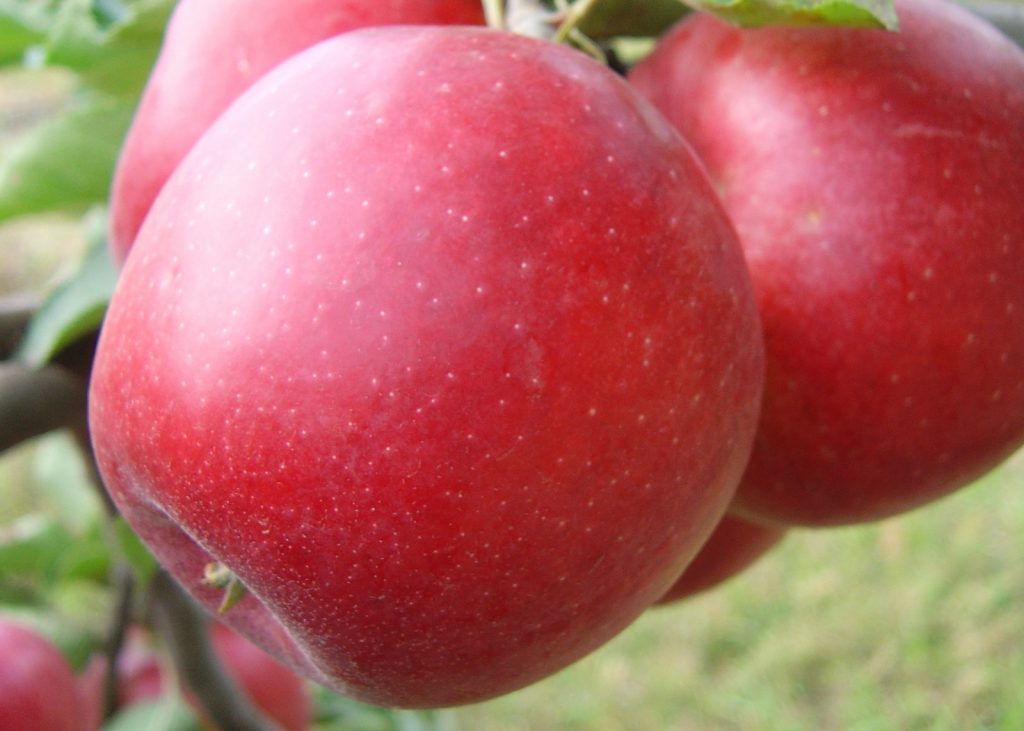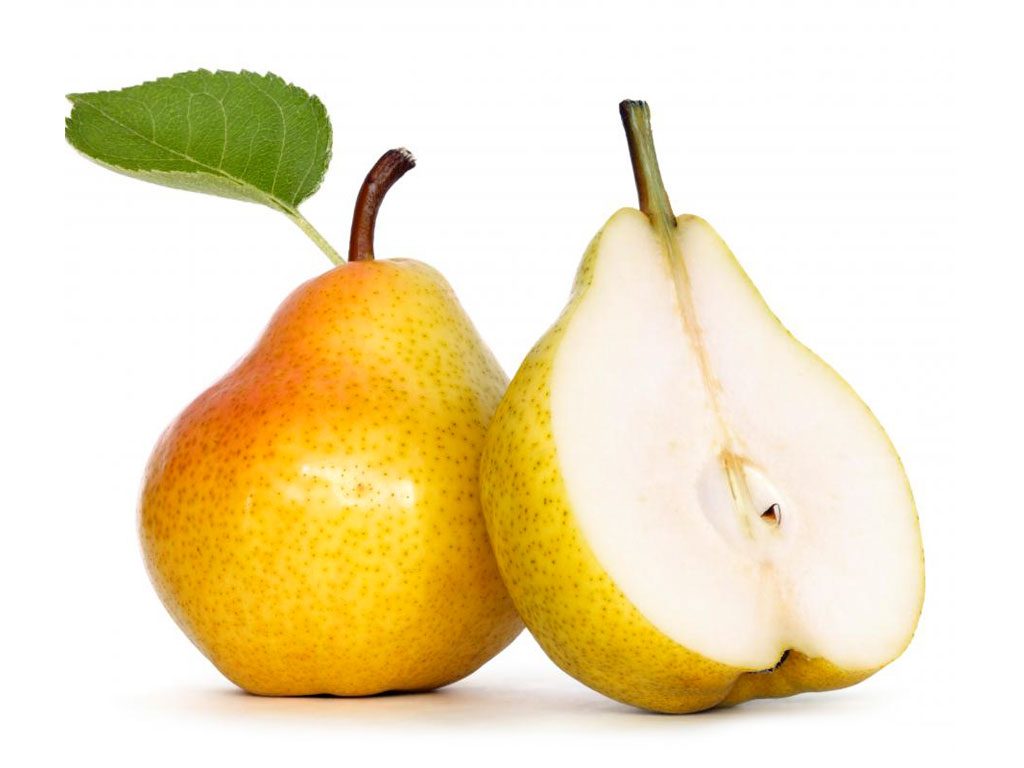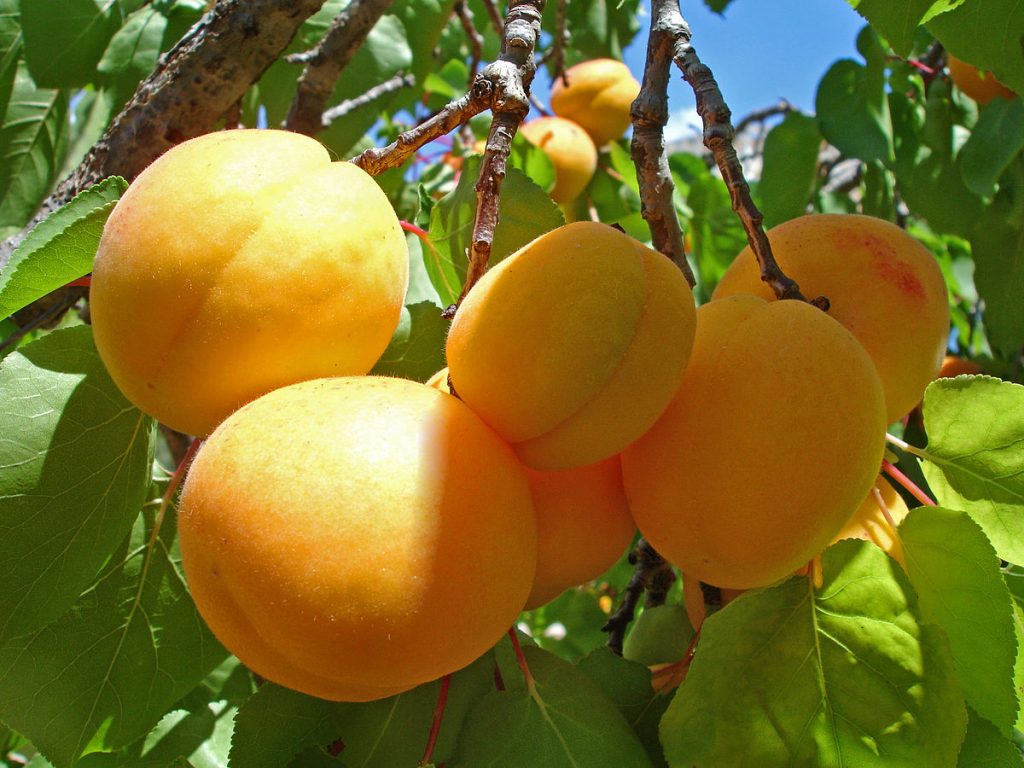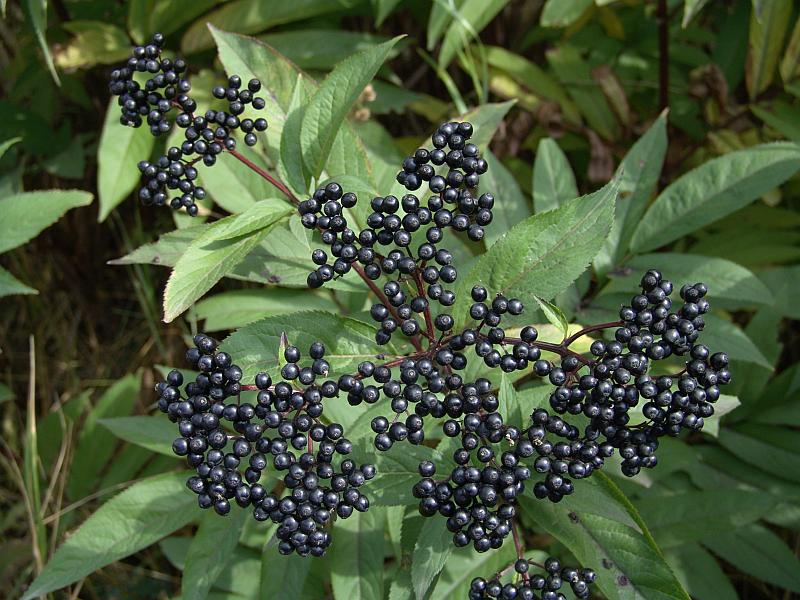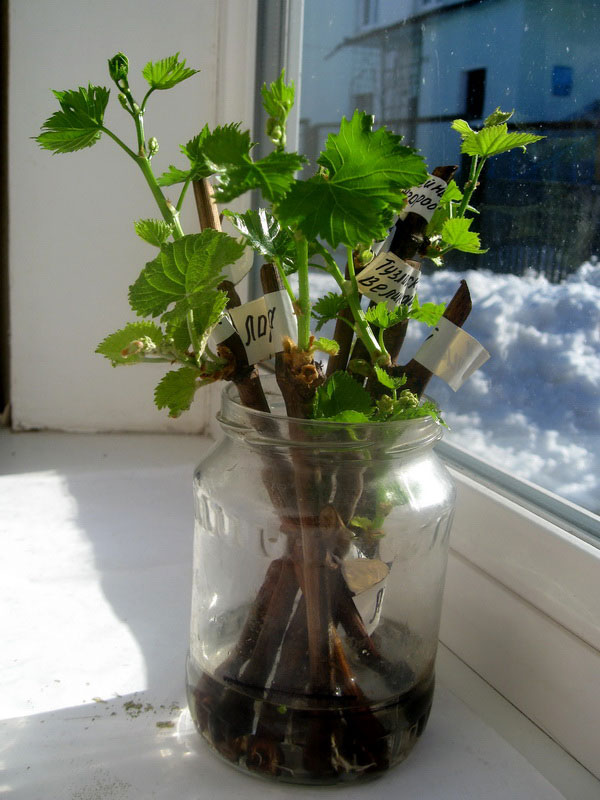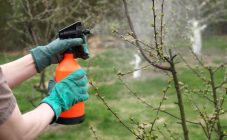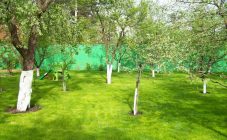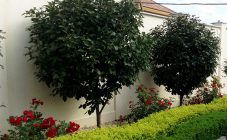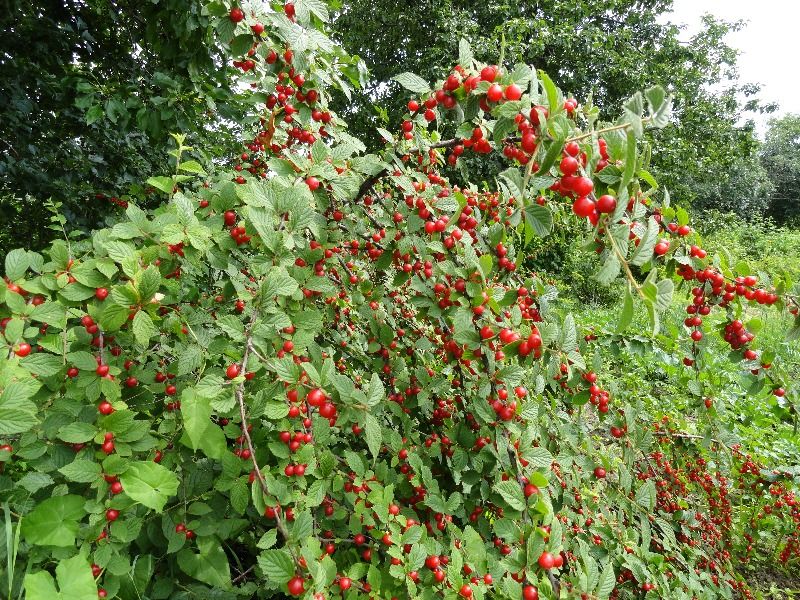Content:
There are about 40 types of fruit and berry trees and shrubs: from the usual, cultivated everywhere, to exotic, requiring special conditions. A rare owner of his own plot, regardless of the size of the land, sooner or later does not think about planting useful fruit-bearing trees and shrubs.
Varieties and types of fruit trees and shrubs
Some of the most widespread fruit trees in Russia are apple, pear, plum, cherry and sweet cherry, peaches, nectarines, cherry plums.
Healing trees: sea buckthorn, viburnum, honeysuckle, dog rose, black chokeberry, hawthorn.
Shrubs: currants, raspberries, gooseberries, irga.
Cultivated forest berries: lingonberry, cranberry, blueberry, blueberry, blackberry.
Fruit vines: grapes and actinidia.
Exotic: gumi, walnut, goji, duke, dogwood, medlar.
There are tens of thousands of names of fruit trees, and the selection of their varieties is constantly increasing.
To select fruit trees for the garden, you should consider the following factors:
- The exactingness of crops to the distance from each other in a row and their height, so that undersized species are not shaded by higher ones;
- Compatibility of trees and their pollinators. Most trees are self-fertile and require pollinators - certain varieties that bloom at the same time. For shrubs, cross-pollination with other varieties of its species increases yields;
- Zoning of varieties, for example, winter-hardy for Siberia and the Moscow region;
- Ripening dates of varieties: early, medium and late;
- Plant compatibility - the right neighborhood improves the quality of the crop, for example, varieties of regular and remontant raspberries are planted at a long distance;
- Demanding soil composition - all fruit plants require fertile soil, but different species require acidic, neutral or alkaline soil;
- Demanding lightness, shade tolerance;
- Demanding care and watering - some plants are unpretentious and grow favorably on their own with minimal care, others require shelter for the winter, frequent watering or early spring care. Therefore, when choosing fruit trees for a site, one should take into account the possible time spent on the site;
- The timing of the beginning of fruiting, so some species can please with fruits the next year after planting, others will have to wait more than 7 years.
Apple and pear varieties differ in terms of ripening and storage. Summer, autumn and winter species stand out. There are also differences in varieties in the size and color of the fruits, in their taste - from sour to sweet.
Garden plum, depending on the variety, has fruits of different colors: yellow, blue, purple, red and pale green, as well as sizes from small to large.
Cherry varieties can be divided into: self-fertile, cherries of different ripening periods, excellent in winter hardiness and taste.
Raspberries are distinguished into traditional varieties, different ripening periods, as well as large-fruited species and a special remontant variety.
Gooseberries are classified into European, American, and hybrid varieties.
Blackberries are erect, semi-creeping and remontant.
Dwarf and fast growing varieties
Low-growing fruit trees are grown in small garden areas and for decorative purposes. In terms of fruiting, dwarf trees are not inferior to their usual varieties and, moreover, have an earlier fruiting.
Description of some varieties
Apple tree
Candy is an early summer, productive winter-hardy variety. Small fruits, about 100 g, have some of the best taste among summer varieties. The color of the fruit is light yellow, with a pink blurred blush and red streaks all over the apple. Fruiting occurs at 4-5 years.
Pear
Decor is a winter-hardy, unpretentious variety. Fruiting begins in the second year of growth. Pears ripen in late summer, weighing up to 260 g, green-yellow, sometimes with a lateral blush. Fruit with an unusually juicy, sweet-sour pulp.
Plum
President is a mid-season, winter-hardy variety, resistant to drought, fungal diseases and pests. Bears fruit for 2-3 years. A variety with a high annual yield. Plums are large, red-violet in color with a gray waxy bloom. The pulp is dense, juicy, sweet, with pleasant sourness, light yellow in color. Separating bone.
Cherry
Shokoladnitsa is a self-fertile winter-hardy variety. Fruiting occurs at 4 years. The branches hold the crop well. The variety is distinguished by sweet large fruits, similar in taste to sweet cherries, with a maroon, almost black color. Cherry ripens in the middle of summer, zoned for central Russia.
Peach
Balconella is a low-growing tree, not exceeding 1 m in height. Average ripening period. Fruiting occurs in 2-3 years. Fruits of excellent taste and aroma, weighing up to 150 g. The stone is well separated.
Apricot
Earley Red Orange is a very early, high-yielding self-fertile variety. It has good winter hardiness. Fruits, weighing 50-80 g, rounded, orange, with a slight blush. The pulp is juicy and aromatic, with an excellent taste. Variety with high disease resistance, excellent transportability.
The fruits of trees grown on a dwarf rootstock are distinguished by higher commercial qualities. The illumination of small trees is sufficient throughout the crown, the fruits in this case acquire a rich color and accumulate more sugars, which has a positive effect on their taste. Dwarf fruit trees for the garden also have a lower percentage of fruit shedding.
Ornamental varieties of fruit trees and shrubs
Ornamental types of fruit trees are used for single plantings and the creation of hedges, when framing buildings.
Types of decorative fruit trees
Cornelian cherry is an unpretentious deciduous shrub that is distinguished by early flowering of a golden hue. Grows in the southern regions of Russia. The fruits have medicinal properties.
The apple tree of Nedzvetsky is an ornamental tree that has flowers and leaves of a red-crimson hue, has good winter hardiness. Miniature fruits are edible, able to survive on branches almost all winter.
The spreading plum is a picturesque red-leaved tree, the decorativeness of which is preserved throughout the year. In autumn, fruits appear in the form of small red and yellow balls, similar to cherries.
Cherry Kiku Shidare - sakura, self-fertile decorative cherry with pink double flowers. Has a spreading thickened crown.
Types of fruit ornamental shrubs
Black elderberry is a fragrant flowering shrub of the honeysuckle family, with white inflorescences and a dense crown. The plant is unpretentious to care for. Jams and jams are made from fruits, as well as fruits and flowers are part of the famous alcoholic drink - sambuca.
Viburnum vulgaris - viburnum blooms beautifully with lush white inflorescences. In autumn, brushes of bright red, as if transparent, berries ripen.Viburnum berries have great medicinal value.
Hawthorn - belongs to the family Rosaceae, a shrub with beautiful aromatic flowering and fruiting. The flowers are white, collected in small inflorescences. The shrub is used to create hedges.
Rosehip is a shrub with beautiful large flowers and vitamin fruits. The flowers remain on the bush for several months and have different shades with a wonderful aroma.
Barberry is a thorny shrub with a height of 1 to 4 m. It has a varied leaf color: yellow, burgundy, green, purple. There are several types and varieties of barberry. Often used for planting near fences with a protective function due to the presence of thorns throughout the bush.
Highbush blueberry is a shrub with constant decorativeness throughout the season and beautiful healthy fruits. Demanding on soil conditions.
Actinidia kolomikta is a liana with a variety of leaf colors and fruits that have the structure and taste of kiwi fruit.
How to propagate varieties of fruit and berry plants
Fruit and berry crops are propagated in a vegetative way, when a new whole tree is restored from separate organs or parts of another. Growing from seeds or seeds will not succeed in obtaining all the original parental qualities, since plants have a complex hereditary basis. The seed method is used in breeding for breeding new varieties and growing rootstocks.
Cutting is a fast, efficient method of propagation, suitable for most fruit crops. For cuttings, choose lignified or green, annual, the strongest and healthiest branches of the plant.
Autumn cuttings are carried out with subsequent winter storage of the cuttings in a cool place or with horizontal digging in the ground, under mild winter conditions. In the fall, cuttings are cut after leaf fall, before the onset of frost. Autumn cuttings are stored until spring.
Summer cuttings with green shoots are carried out for shrubs. Green shoots have a higher root formation ability than lignified ones. The peculiarity of summer cuttings is that green shoots are not used for storage. The cuttings, after cutting, are placed in a solution of growth stimulants so that they release the roots. After the roots appear, the sprout is planted in open ground. For growth and rooting, high humidity and an appropriate temperature of 23-25 ° C are required, which may require the construction of a greenhouse and daily watering. The place where the seedling is grown should be shaded, not allowing the bright sun throughout the day. One month after planting, airing can be carried out by opening the greenhouse during the day.
Fruit trees are propagated by grafting. The grafted plant can be purchased at the nursery, ordered by mail, or grafted yourself. Rootstock - that part or independent fruit tree where the required culture is grafted, it can also be a seedling or wild. It is important to choose a compatible crop as a rootstock, with a well-developed root system, with good frost resistance, if necessary. Self-grafting will allow you to update the garden, get the variety you like for several years, without planting a seedling and a long wait.
Summer cutting of fruit tree cuttings requires immediate grafting.
High-quality cuttings are taken from the south side of the tree from the middle tier, such shoots form short internodes with developed eyes.
Tips and tricks for choosing trees
Thinking about which fruit trees and shrubs to plant on your site, you should carefully approach the zoning of the territory and determine in advance where crops can be grown.Most trees have a long growth period, do not tolerate transplanting well and need to be allocated a permanent place of growth.
Easy-care varieties and types of plants differ:
- resistance to weather conditions, cold resistance when choosing for regions with a harsh climate that do not require shelter for the winter;
- are distinguished by longevity;
- have low fruit crumbling;
- varieties bred with high disease resistance;
- self-fertile varieties;
- shade-tolerant varieties;
- not demanding on the soil composition and feeding;
- with early fruiting;
- do not require complex crown formation.
A beautiful, fragrant garden or fruit trees and shrubs planted separately will become the constant joy and pleasure of receiving delicious vitamin fruits. There are a large number of varieties of crops, in order to choose suitable varieties, you should take into account the various characteristics of the growth of crops and your own preferences.
